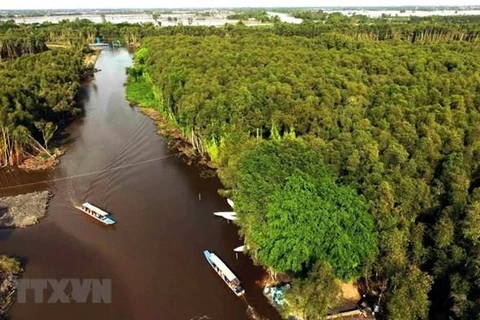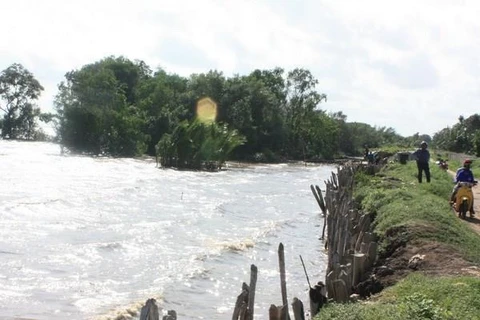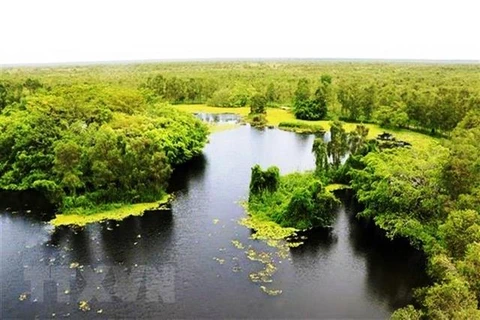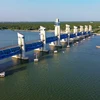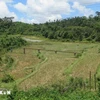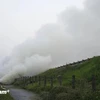HCM City (VNS/VNA) - Immediate measures and long-term plans should be implemented quickly to help provinces in the Mekong Delta cope with drought and saline intrusion, Deputy Minister of Natural Resources and Environment Le Cong Thanh has said.
Thanh has asked the ministry’s Vietnam Meteorological and Hydrological Administration to improve the monitoring of water flows and salinity rates in the delta’s coastal provinces and cities.
“They need to improve the quality of the forecasting systems and provide detailed assessment of impacts of natural disasters, drought and saltwater intrusion on industries such as agriculture and water supply systems,” he said.
Thanh said the meteorological administration, the ministry’s other functional units and the Mekong River Commission (MRC) should work closely to monitor the discharge of water from reservoirs in the upper area of the Mekong River, and negotiate with neighbouring countries upstream about the use of water resources as well as the construction of hydroelectric dams and reservoirs.
According to the National Centre of Hydro-Meteorological Forecasting, total rainfall in the delta was 150 to 250mm in August.
The total water flow in the upstream Mekong Rivers was 28-31 percent lower than the average amount recorded over many years.
The water levels in the Mekong River are increasing, with the highest level reaching 2.5m at Tan Chau Station on Tien River and 2.2m at Chau Doc Station on Hau River.
The water level has remained at 1.5m in districts upstream such as An Giang province’s Tan Chau town and An Phu and Phu Tan districts, and Dong Thap province’s Hong Ngu town and Hong Ngu and Tan Hong districts.
Hoang Duc Cuong, deputy general director of the meteorological administration, said the current water level on the mainstream Mekong River was much lower than the level in the past.
This has caused a high risk of drought and salt water intrusion for the dry season this year and next years, mainly in the river mouth of the southern region, he said. “Salt water intrusion is predicted to come much earlier than usual, from the first months of 2020.”
The peak of the flooding is expected to occur in late September or early October in the delta. From September, the amount of rainfall will drop quickly, while water flows in rivers will continue to decline.
The water level in the upper reaches of the Mekong River will be seriously affected by tides.
Storms and tropical depressions are forecast to directly affect the lower Mekong river basin, causing heavy rainfall.
The sudden discharge of water from upstream hydropower plants could occur due to heavy rains, he warned.
Localities needed to be fully prepared to promptly cope with unexpected floods.
Relevant ministries, branches and localities had been asked to closely monitor drought and saline intrusion to provide timely forecasts and warnings for residents, Thanh said.
“Localities should choose agricultural products suited to their current conditions and actively take measures to combat the negative impacts.”
They should take inventories and make an assessment of the volume of water stored in the delta’s reservoirs and irrigation works to plan for agricultural production and daily use, he said.
“Installing more automatic monitoring stations, zoning the high risk areas of natural disasters, and creating a map warning of drought and saline intrusion are also needed,” Thanh added.
The Vietnam Meteorological and Hydrological Administration has proposed further research in early forecasting and warning of drought and saltwater intrusion. Global issues that directly affect Vietnam’s weather will also be the focus.
It will issue regulations on monitoring and warning of drought and saline intrusion to ensure that local authorities and residents take preventive measures and respond to the situation promptly./.
VNA

